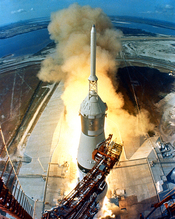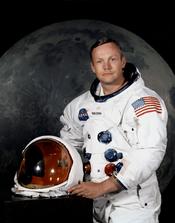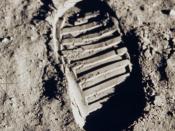When World War II had ended, the young Soviet engineer Sergei P. Korolev, along with Vladimir Glushko were sent to Germany to study what bits of the V2 program the Americans had left them. It was not much, but there was enough for the Soviets to start a rocket-testing program of their own. In 1946 at the Kupustin Yar range several rockets were tested, but with no real success. No real progress was made until after Stalin's death in 1953.
When Korolev heard of the Americans plans to launch a satellite during the year of International Geophysics, he suggested that the Soviets should do the same. Korolev knew that his R-7 rocket was capable of carrying a load of up to 4,400 pounds, more than enough to carry a small satellite. On October 4 1957 Sputnik I weighing just over 194 pounds was launched. A month later Sputnik II was launched, it carried a payload of 1,100 pounds.
It also carried the first living creature into space, Laika the dog.
The Americans where not at all happy about the Soviet space activity and saw it as an insult to their national pride. Millions of dollars were poured into keeping up with the Soviets. The space race had begun.
The National Air and Space Administration or NASA, was formed in 1958, and von Braun's team joined this new body in 1960.
Project Mercury was a rushed attempt to keep up with the Soviets. In 1958 the giant Saturn series of boosters were in development, these would eventually replace all other boosters. Unfortunately for the Americans, Project Mercury was started too soon and had to use the currently existing Redstone and Atlas rockets. These modified intercontinental ballistic missiles could only carry a limited payload; therefore the Mercury spacecraft had to be very...



Race to the moon.
Even though im not really interested in this area, i found this a really interesting essay, I was well structured and it was clear a lot of time and effort was put into it! The space race will appeal to a lot of people and so I feel it is an important essay.
8 out of 8 people found this comment useful.